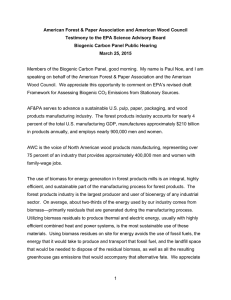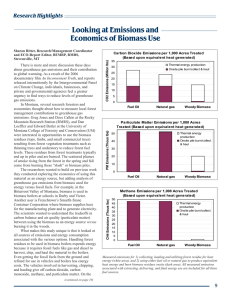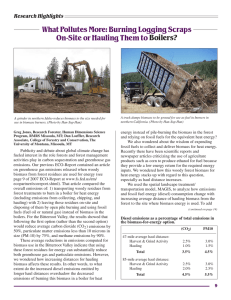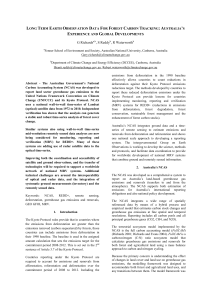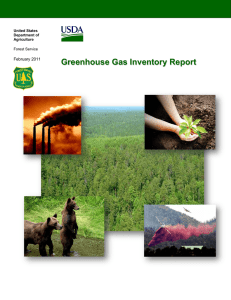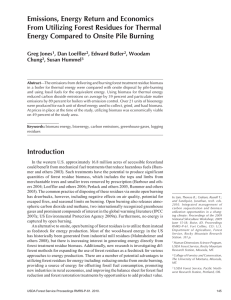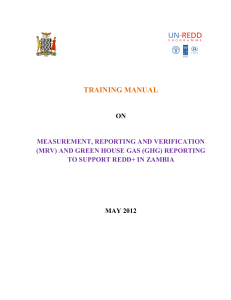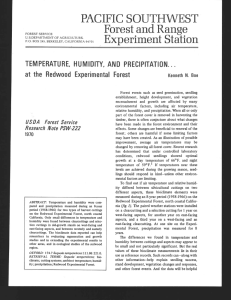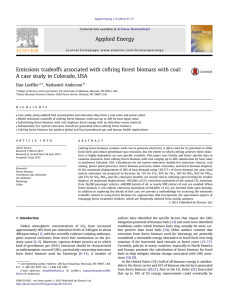Background
advertisement
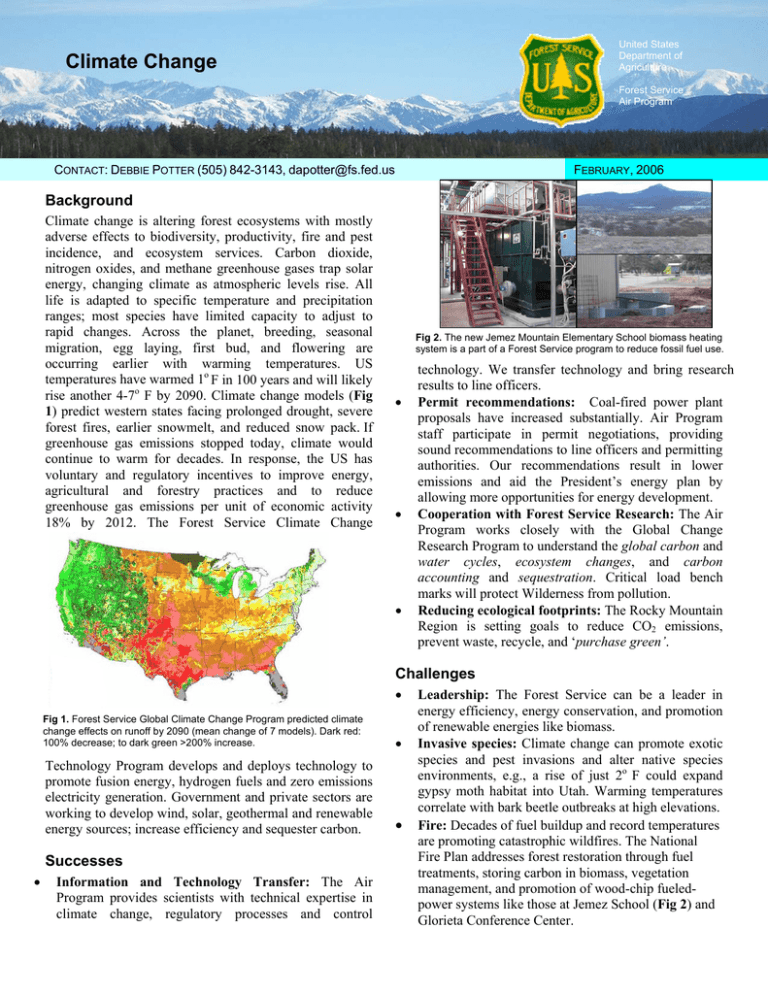
United States Department of Agriculture Climate Change Forest Service Air Program CONTACT: DEBBIE POTTER (505) 842-3143, dapotter@fs.fed.us FEBRUARY, 2006 Background Climate change is altering forest ecosystems with mostly adverse effects to biodiversity, productivity, fire and pest incidence, and ecosystem services. Carbon dioxide, nitrogen oxides, and methane greenhouse gases trap solar energy, changing climate as atmospheric levels rise. All life is adapted to specific temperature and precipitation ranges; most species have limited capacity to adjust to rapid changes. Across the planet, breeding, seasonal migration, egg laying, first bud, and flowering are occurring earlier with warming temperatures. US temperatures have warmed 1o F in 100 years and will likely rise another 4-7o F by 2090. Climate change models (Fig 1) predict western states facing prolonged drought, severe forest fires, earlier snowmelt, and reduced snow pack. If greenhouse gas emissions stopped today, climate would continue to warm for decades. In response, the US has voluntary and regulatory incentives to improve energy, agricultural and forestry practices and to reduce greenhouse gas emissions per unit of economic activity 18% by 2012. The Forest Service Climate Change Fig 2. The new Jemez Mountain Elementary School biomass heating system is a part of a Forest Service program to reduce fossil fuel use. • • • technology. We transfer technology and bring research results to line officers. Permit recommendations: Coal-fired power plant proposals have increased substantially. Air Program staff participate in permit negotiations, providing sound recommendations to line officers and permitting authorities. Our recommendations result in lower emissions and aid the President’s energy plan by allowing more opportunities for energy development. Cooperation with Forest Service Research: The Air Program works closely with the Global Change Research Program to understand the global carbon and water cycles, ecosystem changes, and carbon accounting and sequestration. Critical load bench marks will protect Wilderness from pollution. Reducing ecological footprints: The Rocky Mountain Region is setting goals to reduce CO2 emissions, prevent waste, recycle, and ‘purchase green’. Challenges • Fig 1. Forest Service Global Climate Change Program predicted climate change effects on runoff by 2090 (mean change of 7 models). Dark red: 100% decrease; to dark green >200% increase. • Technology Program develops and deploys technology to promote fusion energy, hydrogen fuels and zero emissions electricity generation. Government and private sectors are working to develop wind, solar, geothermal and renewable energy sources; increase efficiency and sequester carbon. • Successes • Information and Technology Transfer: The Air Program provides scientists with technical expertise in climate change, regulatory processes and control Leadership: The Forest Service can be a leader in energy efficiency, energy conservation, and promotion of renewable energies like biomass. Invasive species: Climate change can promote exotic species and pest invasions and alter native species environments, e.g., a rise of just 2o F could expand gypsy moth habitat into Utah. Warming temperatures correlate with bark beetle outbreaks at high elevations. Fire: Decades of fuel buildup and record temperatures are promoting catastrophic wildfires. The National Fire Plan addresses forest restoration through fuel treatments, storing carbon in biomass, vegetation management, and promotion of wood-chip fueledpower systems like those at Jemez School (Fig 2) and Glorieta Conference Center.


